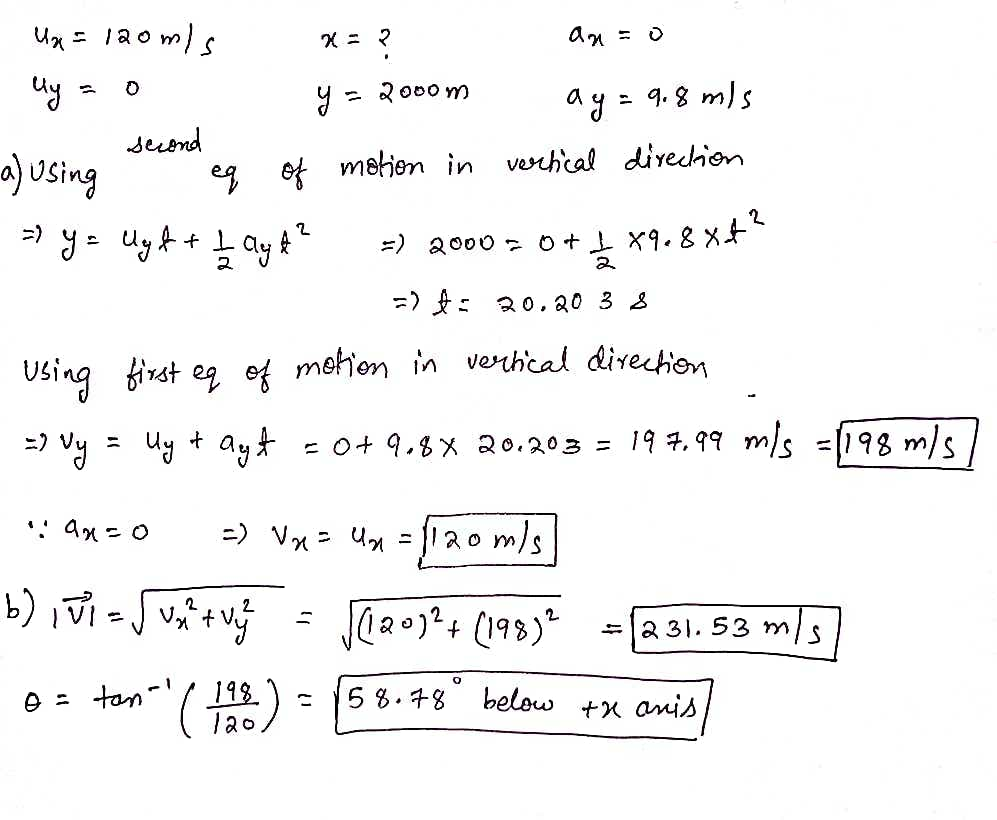Projectile motion, initial velocity horizontal: A military airplane flies horizontally at a speed of 120 m/s. It drops a test bomb from an elevation of 2000 m. Ignore air resistance. The bomb eventually hits the level ground below—questions that follow will be regarding the interval beginning just after the bomb is released, and ending just before the bomb hits the ground. Assume we are given 3 sig. figs. for all values. (PSL section 4.2) What are the (i) horizontal and (ii) vertical components of the bomb’s velocity just before it hits? Calculate the (i) magnitude and (ii) direction (angle) of the bomb’s velocity just before it hits. Draw a scale diagram of the x and y components of the velocity vector just before the bomb hits.
Projectile motion, initial velocity horizontal: A military airplane flies horizontally at a speed of 120 m/s. It drops a test bomb from an elevation of 2000 m. Ignore air resistance. The bomb eventually hits the level ground below—questions that follow will be regarding the interval beginning just after the bomb is released, and ending just before the bomb hits the ground. Assume we are given 3 sig. figs. for all values. (PSL section 4.2)
What are the (i) horizontal and (ii) vertical components of the bomb’s velocity just before it hits?
Calculate the (i) magnitude and (ii) direction (angle) of the bomb’s velocity just before it hits.
Draw a scale diagram of the x and y components of the velocity vector just before the bomb hits.

Step by step
Solved in 2 steps with 2 images
